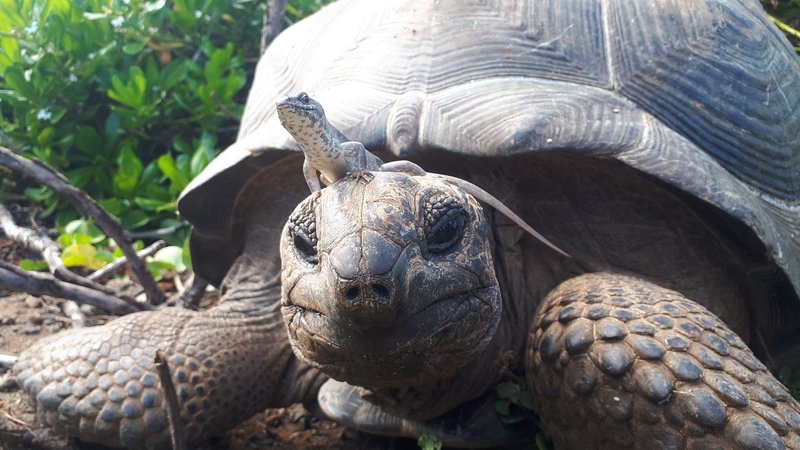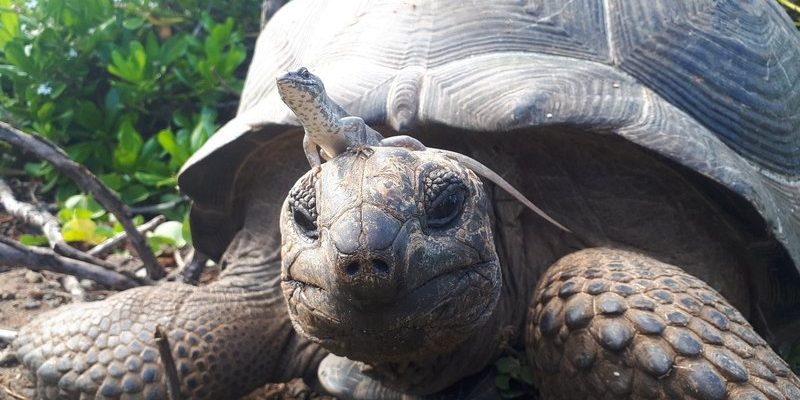
So, what do you do if you come across one? The first instinct might be to snap a photo or rush over to pet this gentle giant. But hold on! These tortoises are not just slow-moving dinosaurs; they’re also vulnerable animals deserving of respect. Let’s break down how to interact with these magnificent tortoises safely and responsibly.
Understanding the Aldabra Giant Tortoise
The Aldabra giant tortoise is native to the Aldabra Atoll in the Seychelles. They’re one of the largest tortoise species on Earth. Unlike their Galápagos cousins, Aldabra tortoises have a more rounded shell, which helps them store water in their bodies, making them perfectly adapted to their dry, sandy habitat. They primarily feed on grasses, leaves, and fruits, and can roam for miles in search of food.
Honestly, these tortoises don’t seek human interaction. They are shy and prefer to go about their business in peace. Although they may look like they’re moving in slow motion, they can actually cover ground quite efficiently. If you spot one, it’s a clear signal that you’re experiencing a unique moment in nature.
Keep Your Distance
The most crucial thing to remember when you encounter an Aldabra giant tortoise is to keep your distance. Approaching too closely can stress the animal and disrupt its natural behavior. Generally, a distance of at least 15 to 20 feet is respectful. This distance not only keeps the tortoise calm but also allows you to observe its fascinating behavior without intruding.
You might be wondering why distance matters. For one, these tortoises can feel threatened, which may lead them to withdraw into their shells or even run away—if you can call it running! Plus, being close to wild animals can pose risks to both their health and yours. It’s best to watch and enjoy from afar.
Respect Their Habitat
When encountering an Aldabra giant tortoise, you’re stepping into its home. This means you should respect its environment. Avoid trampling over vegetation or disturbing any nests you might come across. You wouldn’t want someone to walk through your living room uninvited, right? The same applies here.
If you’re in a group, make sure everyone understands the importance of staying on marked paths and keeping noise to a minimum. Too much disturbance can upset these gentle giants and their ecosystem.
Observation is Key
Instead of rushing in, take a moment to observe. What is the tortoise doing? Is it grazing, sunbathing, or just plodding along? Watching its movements gives you a deeper appreciation of its life. You can even take notes or photos from a distance, documenting this rare wildlife experience.
Here’s a simple breakdown of what to observe:
- Feeding Habits: Notice what it eats and how it interacts with its surroundings.
- Movement: Observe its pace and how it navigates obstacles.
- Social Behavior: Are there other tortoises nearby? How do they interact?
Each observation adds richness to your encounter and helps you understand these ancient beings better.
Stay Calm and Quiet
Wildlife encounters can be exciting, but it’s essential to remain calm and quiet. Avoid sudden movements or loud noises that could startle the tortoise. Imagine you’re meeting a celebrity; you wouldn’t want to freak them out, right?
Instead, move slowly, and if the tortoise approaches you, let it come to you. This is part of its natural exploration. Remember, your goal is to enjoy the moment while ensuring the tortoise feels safe and unthreatened.
Don’t Feed Them
While it might be tempting to share a snack with a tortoise, feeding them is a big no-no. Human food can be harmful to their health. For example, many of us think leafy greens are safe, but these animals have a specific diet that needs to be maintained to ensure their well-being.
Plus, feeding wild animals can disrupt their natural foraging behavior, making them reliant on people. Enjoy the spectacle of their natural feeding habits instead.
Know the Laws and Regulations
Different regions have varying laws regarding wildlife encounters. If you’re in a national park or a protected area, there may be specific rules about how to interact with wildlife. Some places may even have guidelines on how close you can get to animals and how to report your sightings.
Here’s a quick list of things to check:
- Park Guidelines: Research any rules specific to where you are.
- Wildlife Protection Laws: Familiarize yourself with local regulations that protect these tortoises.
- Contact Authorities: If you see an injured tortoise, know whom to call (usually local wildlife authorities).
Being informed ensures not only your safety but also that of the tortoises.
Reflect and Share Your Experience
After your encounter, take a moment to reflect on the experience. What did you learn about the Aldabra giant tortoise? How did it feel to observe such a majestic creature in its natural habitat? Sharing your stories with friends or on social media can inspire others to appreciate these remarkable animals.
By spreading awareness, you contribute to the conservation of these fascinating creatures. You can help others understand the importance of respecting wildlife and encourage responsible actions when interacting with animals in nature.
Coming across an Aldabra giant tortoise in the wild can be a magical experience. By keeping your distance, respecting their habitat, and observing quietly, you can ensure that both you and the tortoise have a positive experience. Remember to let the tortoise be itself while you enjoy the beauty of nature. These creatures have seen the world change over centuries, and by treating them with the respect they deserve, you become a part of their story. Happy exploring!

